第68章 MONEY OR SIMPLE CIRCULATION(49)
This process turns them not into money but into value:a value that is determined by the proportion of their own volume to the volume of commodities,for the two volumes must balance.Although then,according to Hume,gold and silver enter the world of commodities as non-commodities,as soon as they function as coin he transforms them into plain commodities,which are exchanged for other commodities by simple barter.Provided the world of commodities consisted of a single commodity,e.g.,one million quarters of corn,it would be quite simple to imagine that,if two million ounces of gold existed,one quarter of corn would be exchanged for two ounces of gold or,if twenty million ounces of gold existed,one quarter would be exchanged for twenty ounces of gold;the price of the commodity and the value of money would thus rise or fall in inverse ratio to the available quantity of money.[4]But the world of commodities consists of an infinite variety of use-values,whose relative value is by no means determined by their relative quantities.
How then does Hume envisage this exchange of commodities for gold?He confines himself to the vague abstract conception that every commodity being a portion of the total volume of commodities is exchanged for a commensurate portion of the existing volume of gold.The dynamic movement of commodities --a movement,which originates in the contradiction of exchange-value and use-value contained in the commodities,which is reflected in the circulation of money and epitomised in the various distinct aspects of the latter --is thus obliterated and replaced by an imaginary mechanical equalisation of the amount of precious metals present in a particular country and the volume of commodities simultaneously available.
Sir James Steuart begins his investigation of specie and money with a detailed criticism of Hume and Montesquieu.He is indeed the first to ask whether the amount of money in circulation is determined by the prices of commodities,or the prices of commodities determined by the amount of money in circulation.Although his exposition is tarnished by his fantastic notion of the measure of value,by his inconsistent treatment of exchange-value in general and by arguments reminiscent of the Mercantile System,he discovers the essential aspects of money and the general laws of circulation of money,because he does not mechanically place commodities on one side and money on the other,but really deduces its various functions from different moments in commodity exchange.
"These uses"(of money in internal circulation)"may be comprehended under two general heads.The first,payment of what one owes;the second,buying what one has occasion for;the one and the other may be called by the general term of ready-money demands....Now the state of trade,manufactures,modes of living,and the customary expense of the inhabitants,when taken all together,regulate and determine what we may call the mass of ready-money demands,that is,of alienation.To operate this multiplicity of payments,a certain proportion of money is necessary.This proportion again may increase or diminish according to circumstances;although the quantity of alienation should continue the same....From this we may conclude,that the circulation of a country can only absorb a determinate quantity of money.""The standard price of everything"is determined by "the complicated operations of demand and competition",which "bear no determined proportion whatsoever to the quantity of gold and silver in the country"."What then will become of the additional quantity of coin?"--"It will be hoarded up in treasures"or converted into luxury articles."If the coin of a country ...falls below the proportion of the produce of industry offered for sale ...inventions such as symbolical money will be fallen upon to provide an equivalent for it.""When a favourable balance pours in a superfluity of coin,and at the same time cuts off the demands of trade for sending it abroad,it frequently falls into coffers;where it becomes as useless as if it were in the mine."The second law discovered by Steuart is that currency based on credit returns to its point of departure.Finally he analyses the consequences produced by the diversity in the rate of interest obtaining in different countries on the export and import of precious metals.The last two aspects are mentioned here only for the sake of a complete picture,since they are remote from our subject,namely simple circulation.[5]Symbolical money or credit money --Steuart does not yet distinguish these two forms of money --can function as means of purchase and means of payment in place of the precious metals in domestic circulation,but not on the world market.Paper notes are consequently "money of the society",whereas gold and silver are "money of the world".[6]